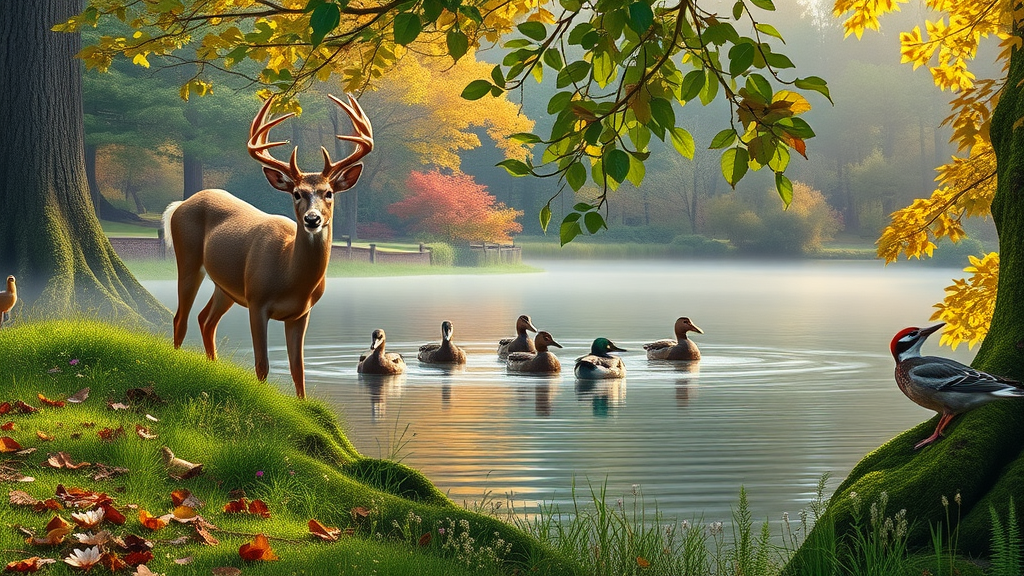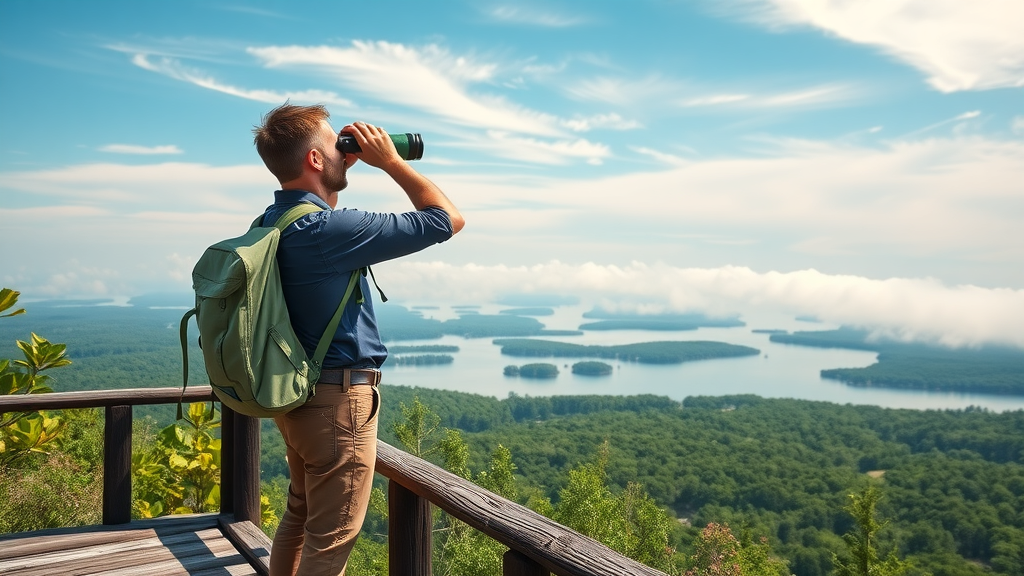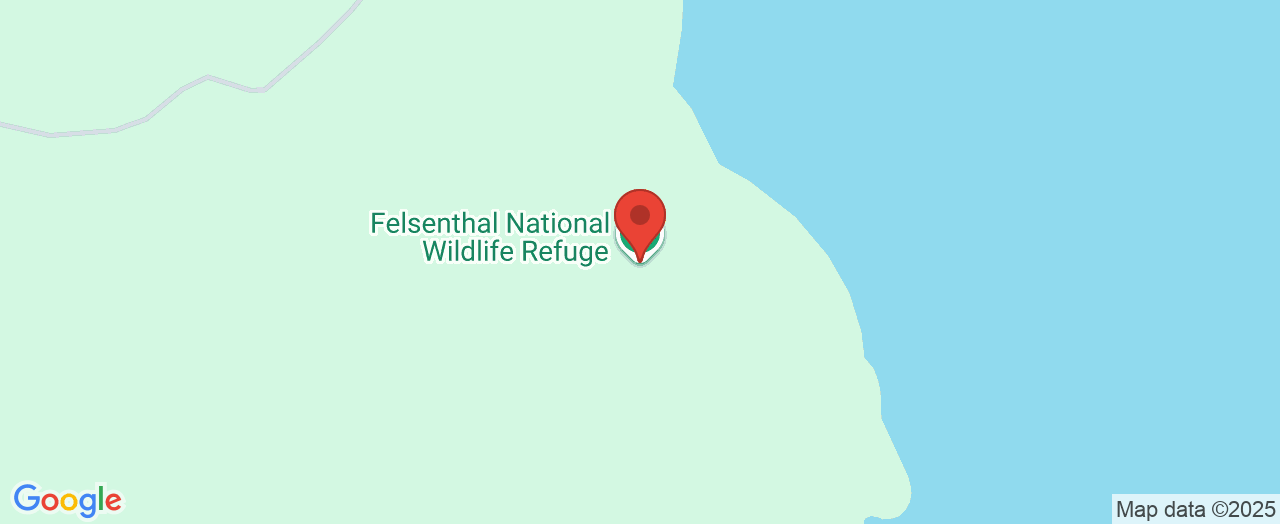Where Untouched Wilderness Beckons: Why Felsenthal National Wildlife Refuge Captivates Adventurers
Have you ever wondered where Southeast Arkansas hides its wildest beauty? Imagine a place where rivers twist and turn through ancient swamps, birds fill the skies on mass migrations, and over a thousand plant and animal species thrive in a mosaic of habitats. That place is Felsenthal National Wildlife Refuge, an expansive sanctuary quietly tucked away just west of Crossett, Arkansas. Spanning a remarkable 76,000 acres, this refuge promises more than just scenic views—it offers a true immersion into one of the most diverse ecosystems in the region.
The allure of Felsenthal National Wildlife Refuge isn’t just in the sight of cypress knees rising mysteriously from blackwater swamps or the steady current of the Ouachita and Saline Rivers. It’s in the stark reminder that, in a world often dominated by busy routines and digital screens, such wild and remote landscapes still exist and remain accessible to anyone willing to explore. Whether you are a seasoned angler, a birder eager for new sightings, or a family searching for a peaceful retreat, understanding the depths of what Felsenthal has to offer could turn a routine outing into an unforgettable adventure.
The value of knowing what lies within this vast refuge reaches beyond the simple thrill of discovery. Felsenthal's unique geography creates habitats unlike any other, supporting rare species, vibrant wildflowers, and endless opportunities for learning and recreation. As you explore this article, you’ll discover why understanding Felsenthal National Wildlife Refuge matters not only for your own experience but for the enduring legacy of America’s wild spaces.

Felsenthal’s Tapestry of Life: Biodiversity, Waterways, and What Makes This Refuge Unique
Felsenthal National Wildlife Refuge stands as a living testament to America’s commitment to wildlife and habitat conservation. Founded in 1975, this extraordinary refuge is defined by its intricate network of rivers, creeks, and lakes—all interconnected and shaped by the meandering Ouachita and Saline Rivers. The result is a complex puzzle of swamps, forests, and sloughs that shelter wildlife found nowhere else in such concentration. Over 1,150 documented species of plants and animals call this place home, and new discoveries continue as scientists and citizen explorers add to the growing list of inhabitants.
What does this mean for the visitor? It’s simple—the diversity found here is not just a statistic, but a living, breathing reality. Birders can witness the spectacle of migrating waterfowl in the fall and spring; anglers can fish waters renowned for their abundance; nature photographers and outdoor enthusiasts are met with landscapes that range from vibrant wildflower meadows to dense, primeval forests. Yet, Felsenthal is more than the sum of its habitats—it is part of a national network dedicated to preserving the most pristine and remote places in the United States. Not understanding what makes this location unique could mean missing out on the rare chance to witness a slice of wild America at its most authentic.

Those venturing into Felsenthal without awareness of its subtle complexities risk overlooking the delicate balance required to maintain such a precious environment. Water levels fluctuate, shaping the rhythms of life for both humans and wildlife. Navigating with care and preparation is vital, and respecting regulations helps ensure these wonders endure for future visitors. For those who take the time to learn, the refuge reveals more than just scenery—it offers a journey into the heart of Arkansas’s wild spaces.
Why Exploring Felsenthal’s Waters and Forests Transforms Every Visit
Felsenthal National Wildlife Refuge demonstrates the remarkable interplay of water and wilderness, providing immersive opportunities for recreation, learning, and personal renewal. As a recognized expert contributor to both biodiversity and outdoor recreation in Arkansas, the refuge’s approach is guided by stewardship and long-term thinking. Visitors benefit from a nuanced blend of accessible trails, well-maintained boat ramps, and abundant fishing spots—designed to invite everyone from seasoned sportsmen to first-time explorers.
The benefits of venturing into Felsenthal’s landscape are immediate and far-reaching. Fishermen find unparalleled conditions among its standing timber and submerged cover, while families and photographers delight in the array of bank fishing, hiking, and birdviewing sites. Public restrooms at popular loading points and thoughtful signage ensure comfort and orientation even in such vast natural spaces. The refuge’s commitment to safety, ecological balance, and visitor enjoyment means each outing is shaped by respect for the land and its inhabitants.

By experiencing Felsenthal firsthand, visitors build a lasting appreciation for Arkansas’s natural heritage—and learn the practical values of responsible recreation, preparedness, and environmental respect. The refuge's network of rivers, lakes, and forests is not just a scenic backdrop; it’s a living classroom and an ever-changing adventure for anyone seeking deeper insight into the natural world.
The History Behind Felsenthal: Conservation Rooted in Community and Waterways
The origin story of Felsenthal National Wildlife Refuge is as layered as its landscapes. Established in the mid-1970s in response to an urgent need for wildlife and waterfowl preservation, its creation coincided with an era of growing environmental awareness in the United States. The refuge takes its name from a small community at its southwest corner, reflecting both its local roots and its broader significance within the network of U.S. Fish & Wildlife Service protected areas.
From its initial boundaries, Felsenthal has expanded through ongoing scientific study, community engagement, and careful management of its abundant water resources. Today, it stands as a living example of habitat restoration and the continued value of citizen science, with birders and volunteers actively contributing to ongoing research and discovery.
Practical Tips for Making the Most of Your Visit to Felsenthal National Wildlife Refuge

Preparation is essential when planning an excursion to Felsenthal. The scale and remote nature of the refuge make orientation crucial. Download offline maps since some areas lack cell service—the area’s size makes it surprisingly easy to get turned around amid waterways and winding backroads. Dress appropriately for both the season and the varied terrain, and bring all necessary supplies, as amenities are concentrated at major boat ramps and parks.
Refuse management is a shared responsibility. Carry out all trash, including anything left behind by previous visitors, to help preserve the beauty and integrity of the refuge. For families or groups with mixed interests, Felsenthal offers bank and boat fishing, hiking, wildlife viewing, and educational opportunities—making it easy to plan a day (or longer) with something for everyone.
Why Awareness of Felsenthal’s Role in Conservation Matters for Everyone
Beyond recreation, understanding Felsenthal National Wildlife Refuge means recognizing its role in regional and national conservation efforts. The refuge is a living laboratory, where scientific discovery shapes best practices for habitat management and supports threatened or endangered species. Biologists and volunteers continue to monitor and document the shifting populations of birds, fish, and pollinators, building a vital legacy of citizen science.
The knowledge gained from Felsenthal not only enriches the visitor experience but also informs decisions that impact habitats far beyond Arkansas. Everyone who explores these wild places becomes a part of the conservation story, building a shared appreciation for the interconnectedness of land, water, and wildlife.
Stewardship, Science, and Welcoming All: Felsenthal NWR’s Enduring Mission
The foundation of Felsenthal National Wildlife Refuge is built on a philosophy of stewardship, inclusivity, and scientific inquiry. The refuge sees itself as both guardian and guide, maintaining an unwavering commitment to restore, sustain, and expand vital habitats. Guided by the U.S. Fish & Wildlife Service, Felsenthal blends innovative research with practical conservation—integrating data from over 1,150 documented species and continually updating its practices based on what researchers, citizen scientists, and visitors observe in real time.
Equally vital to the refuge’s mission is its open-door approach. Accessibility guides management decisions: numerous boat ramps and parking areas, free entry, and a wealth of published maps and online resources ensure everyone has the chance to experience its wonders. Felsenthal’s dedication to responsible recreation and public education is apparent in its careful balance of welcome and protection—the kind of thinking that ensures the land remains vibrant now and in the future.
Voices from the Water and Woods: What One Visitor Learned at Felsenthal
Stepping into Felsenthal National Wildlife Refuge can transform both the way you see nature and your own place within it. Whether for fishing, boating, birding, or simple awe, visitors often find their expectations surpassed by the scale, diversity, and tranquility of the refuge. The following words, shared by an enthusiastic explorer, highlight why many consider Felsenthal a true Arkansas treasure:
Beautiful and well maintained Arkansas wildlife refuge! Plenty of boat ramps and plenty of parking areas in different locations around the refuge! Felsenthal wildlife refuge has something for everyone to enjoy. It’s a fisherman’s paradise with lots of standing trees and unlimited cover for fish to use. The park also offers many areas to enjoy fishing from the banks! The area is so vast that I do recommend using google maps to navigate through the roads and waterways and do download your google maps to have just in case you run into any dead spots because it is very easy to get turned around and not remember exactly how to get back out (lost)! There are public restrooms at the popular boat loading sites and parks and I recommend that if you have not already been to Felsenthal that you make sure you do! And if you’ve been there before and were not so impressed that you should definitely get on google maps and find a place and give it another chance! I’m sure that you will not regret going to this beautiful Arkansas treasure! Be safe out there and have fun! Oh wait! Please don’t mess up the beauty of this place by leaving trash! If you take it in, please take it out and as much of the trash that any other person may have left! Let’s do our best to keep Arkansas Many Recreational Areas Clean,Safe and Beautiful for Everyone to Enjoy! I hope to see you out there soon! TDFINCHER
This testimonial affirms that the experiences at Felsenthal National Wildlife Refuge are truly rewarding for those who appreciate nature’s grandeur and seek the joy of getting outdoors. By embracing the spirit of exploration and stewardship, future visitors can share in these same moments of discovery and enjoyment, knowing they are contributing to something much larger than themselves.
How Felsenthal National Wildlife Refuge Sets the Bar for Conservation and Public Access
As wild places become ever more precious, Felsenthal National Wildlife Refuge stands out as both protector and showcase of Arkansas’s rich ecological tapestry. Its continued relevance and authority stem from dedicated stewardship, ecological innovation, and a welcoming approach to all who seek its wonders. For those searching for unspoiled beauty, rare species encounters, and meaningful recreation, this refuge sets a standard worth understanding—and preserving.
In every season and across every waterway, those who visit Felsenthal National Wildlife Refuge are rewarded with insight, tranquility, and connection. The refuge’s ongoing contributions to conservation science make it a leader in sustainable recreation, setting an example for others to follow. Ultimately, experiencing the refuge firsthand not only deepens your appreciation of the wild—it solidifies the importance of protecting such landscapes for generations to come.
Contact the Experts at Felsenthal National Wildlife Refuge
If you’d like to learn more about how Felsenthal National Wildlife Refuge could benefit your outdoor adventures or conservation education, contact the team at Felsenthal National Wildlife Refuge.
📍 Address: Huttig, AR 71747, USA
🌐 Website: https://www.fws.gov/refuge/felsenthal
Felsenthal National Wildlife Refuge Location and Hours

 Add Row
Add Row  Add
Add 





Write A Comment